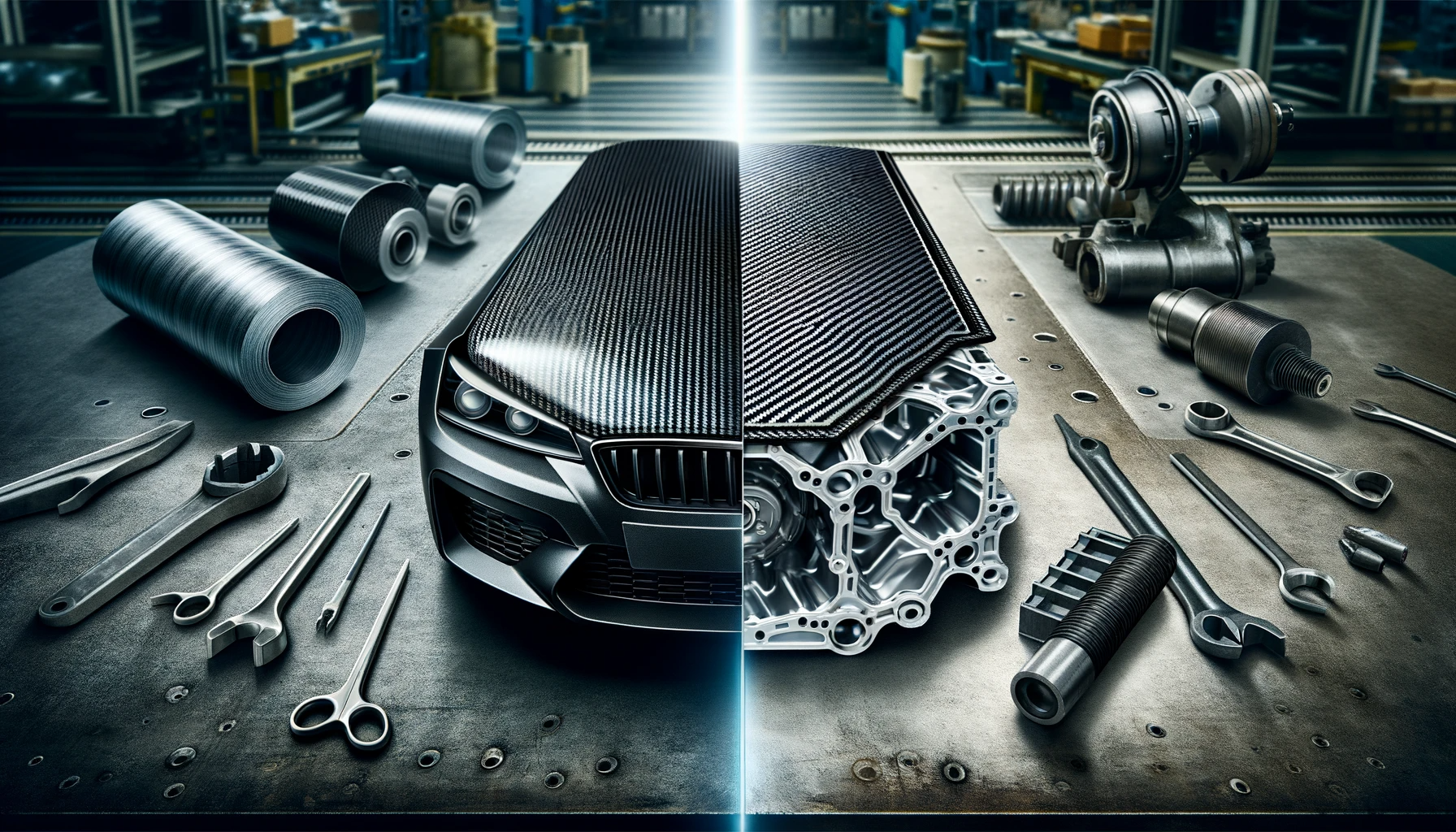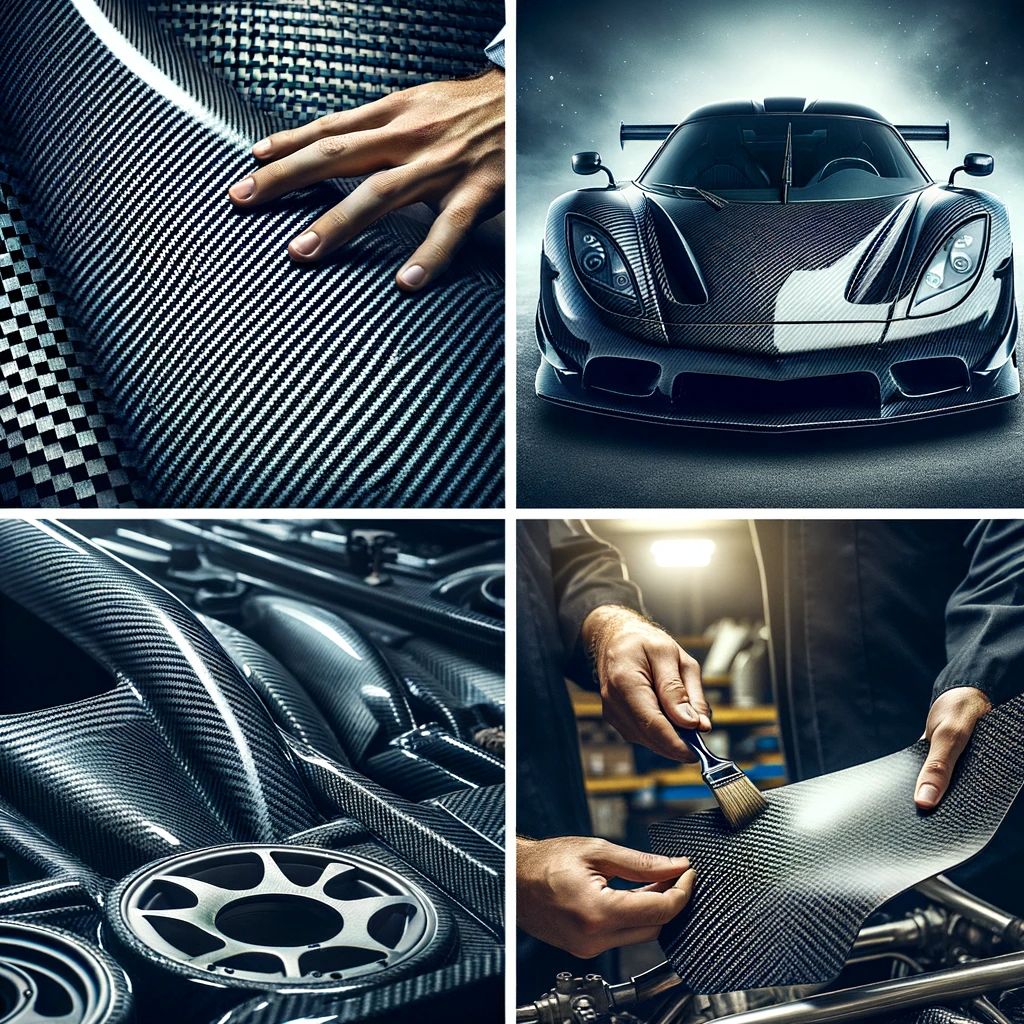
Carbon Fiber vs. Traditional Steel: What's Changing in Car Production?
The automotive industry is undergoing a significant transformation, driven by the need for more efficient, lightweight, and high-performance vehicles. At the heart of this change is the material used in car production. For decades, steel has been the backbone of car manufacturing, but a new contender, carbon fiber, is rapidly changing the landscape. Let's delve into the world of carbon fiber versus traditional steel and uncover what's really changing in car production.
The Reign of Steel in Automotive Manufacturing
For over a century, steel has been the go-to material for car manufacturers. Its popularity stems from its durability, strength, and relatively low cost. Steel's ability to absorb impact energy in collisions has made it a reliable choice for ensuring passenger safety. However, steel has its drawbacks, primarily its weight. Heavier cars consume more fuel, a factor increasingly at odds with the global push for efficiency and environmental sustainability.
Enter Carbon Fiber: A Game Changer
Carbon fiber, a material more commonly associated with high-end sports cars and aerospace applications, is making waves in the automotive industry. This material is known for its remarkable strength-to-weight ratio. Cars made with carbon fiber are significantly lighter than their steel counterparts, leading to improved fuel efficiency and performance. But that's not all; carbon fiber also offers high tensile strength, stiffness, and corrosion resistance, making it an attractive alternative to steel.
Comparing the Two: Weight, Performance, and Safety
The most striking difference between carbon fiber and steel is the weight. Carbon fiber composites can be up to 50% lighter than steel, which directly translates to increased fuel efficiency and better handling. In terms of performance, lighter cars can accelerate and brake more effectively, offering a more responsive driving experience. Safety-wise, carbon fiber's energy-absorbing properties are comparable to steel, although the materials react differently in collisions.
Cost and Production Challenges
Despite its advantages, carbon fiber has been slow to enter mainstream car production, mainly due to cost. Producing carbon fiber is an expensive and complex process, making cars that feature it more costly than traditional steel-based vehicles. However, as manufacturing techniques evolve and become more cost-effective, we are beginning to see carbon fiber in more than just luxury and sports cars.
Environmental Impact and Sustainability
From an environmental standpoint, the production of carbon fiber is more energy-intensive compared to steel. However, the reduced weight leads to lower fuel consumption and emissions over the vehicle's lifetime. The sustainability of carbon fiber is also a concern, as recycling options are currently limited compared to steel. Ongoing research aims to make carbon fiber more environmentally friendly throughout its lifecycle.
The Future of Car Production Materials
The automotive industry is at a crossroads, balancing cost, performance, and environmental considerations. While steel continues to be a dominant material, the rise of carbon fiber signals a shift towards lighter, more efficient vehicles. As technology advances, we can expect to see a more diverse use of materials, including hybrids of steel and carbon fiber, to meet the varied demands of the modern automotive market.
In conclusion, the battle between carbon fiber and traditional steel in car production is not just about choosing one over the other; it's about evolving car manufacturing to meet future needs. As we drive into a more efficient, performance-driven, and sustainable era, the materials we use to build our vehicles will continue to play a pivotal role in shaping the automotive industry's future.
The Reign of Steel in Automotive Manufacturing
For over a century, steel has been the go-to material for car manufacturers. Its popularity stems from its durability, strength, and relatively low cost. Steel's ability to absorb impact energy in collisions has made it a reliable choice for ensuring passenger safety. However, steel has its drawbacks, primarily its weight. Heavier cars consume more fuel, a factor increasingly at odds with the global push for efficiency and environmental sustainability.
Enter Carbon Fiber: A Game Changer
Carbon fiber, a material more commonly associated with high-end sports cars and aerospace applications, is making waves in the automotive industry. This material is known for its remarkable strength-to-weight ratio. Cars made with carbon fiber are significantly lighter than their steel counterparts, leading to improved fuel efficiency and performance. But that's not all; carbon fiber also offers high tensile strength, stiffness, and corrosion resistance, making it an attractive alternative to steel.
Comparing the Two: Weight, Performance, and Safety
The most striking difference between carbon fiber and steel is the weight. Carbon fiber composites can be up to 50% lighter than steel, which directly translates to increased fuel efficiency and better handling. In terms of performance, lighter cars can accelerate and brake more effectively, offering a more responsive driving experience. Safety-wise, carbon fiber's energy-absorbing properties are comparable to steel, although the materials react differently in collisions.
Cost and Production Challenges
Despite its advantages, carbon fiber has been slow to enter mainstream car production, mainly due to cost. Producing carbon fiber is an expensive and complex process, making cars that feature it more costly than traditional steel-based vehicles. However, as manufacturing techniques evolve and become more cost-effective, we are beginning to see carbon fiber in more than just luxury and sports cars.
Environmental Impact and Sustainability
From an environmental standpoint, the production of carbon fiber is more energy-intensive compared to steel. However, the reduced weight leads to lower fuel consumption and emissions over the vehicle's lifetime. The sustainability of carbon fiber is also a concern, as recycling options are currently limited compared to steel. Ongoing research aims to make carbon fiber more environmentally friendly throughout its lifecycle.
The Future of Car Production Materials
The automotive industry is at a crossroads, balancing cost, performance, and environmental considerations. While steel continues to be a dominant material, the rise of carbon fiber signals a shift towards lighter, more efficient vehicles. As technology advances, we can expect to see a more diverse use of materials, including hybrids of steel and carbon fiber, to meet the varied demands of the modern automotive market.
In conclusion, the battle between carbon fiber and traditional steel in car production is not just about choosing one over the other; it's about evolving car manufacturing to meet future needs. As we drive into a more efficient, performance-driven, and sustainable era, the materials we use to build our vehicles will continue to play a pivotal role in shaping the automotive industry's future.



